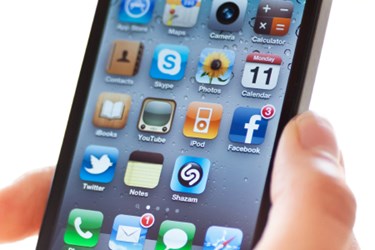Is Apple HealthKit Doing More Harm Than Good?

By Christine Kern, contributing writer

Questions begin to emerge regarding the use and effectiveness of data gathered by HealthKit.
Apple’s roll out of the HealthKit pilot program with at least 14 hospitals participating aims to help healthcare providers monitor patients with chronic conditions such as diabetes and hypertension. It also hopes to lower costs and promote remote patient monitoring to improve outcomes, according to Reuters.
Eight of the participating hospitals are listed on U.S. News & World Report’s Honor Roll of the best hospitals, according to Reuters. Though a complete list of participants has not been published, Ochnser Medical Center in New Orleans, Stanford Children’s Hospital, Penn Medicine, and Duke University Hospital have all spoken publicly regarding their involvement, while Johns Hopkins, Mt. Sinai Hospital, The Cleveland Clinic, and Beth Israel Deaconess have all issues remarks regarding the technology, according to MobiHealthNews.
The software collects patient health data such as blood pressure, weight or heart rate from mobile fitness apps, glucose measuring tools, and Wi-Fi connected scales, according to Reuters. HealthKit is designed to communicate with several existing EMRs, such as Mayo Clinic's platform or Epic Systems' MyChart app, according to Apple.
At the University of Pennsylvania Health System, the pilot is in its early stages. “We have pilot users who have demonstrated that they're able to get information from their devices, in to their phones, and from their phone into their EMR,” Chief Medical Information Officer William Hanson, III, MD, told Healthcare Dive.
While many have high hopes for HealthKit others have raised questions regarding the collection, accuracy, and effectiveness of such data. Hanson sees two potential issues with the use of HealthKit data for medical purposes.
First, the information is being acquired outside the typical medical environment, and is coming from devices that those who are receiving the data don't own or maintain. “The second issue,” Hanson says, “is we lack the contextual information we typically have with patients.
“If I get a high blood pressure reading from a device on a patient in their home environment and I don't have any other context—that's not necessarily an issue, but it's a new way of grappling with information.”
There is also the potential overload of extraneous data that is not crucial to patient monitoring, and it could actually hamper care in the long run. Hanson said that healthcare providers are reporting they don't want to have “a whole new source of alerts that they don't know what do about.”
To answer this, the program is looking at the question of whether the data needs to be handled by an individual, or by a processing algorithm that could spot patients in trouble. They're also considering how to set boundaries on what kind of data should prompt alerts.
In the long run, however, Hanson believes being able to track patient health will be beneficial. “If you can recognize that a patient's weight is going up because they're retaining fluid and call them up to intervene two days before they would have otherwise have to be admitted to the ER, that's a beneficial outcome. There's the Yin and the Yang of this thing.”
